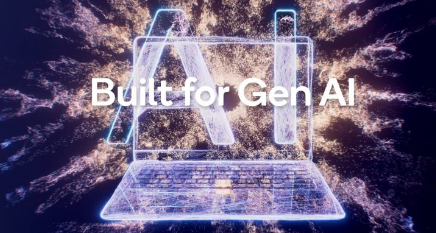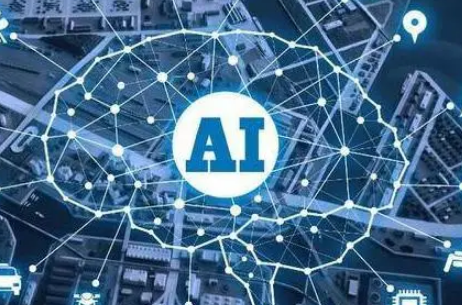- Ameya360 Component Supply Platform >
- Trade news >
- Walmart Calls for Sub-$1 IoT Sensor
Walmart Calls for Sub-$1 IoT Sensor
Chris Enslin wants a sub-$1 sensor for the Internet of Things. For the right product, his company might be willing to purchase a few million of them — a year.
The vice president for digital enterprise solutions at Walmart shared his thoughts on IoT, machine learning, and more in a wide-ranging interview. Perhaps the most interesting item on his wish list is a good, cheap sensor.
“Lick-and-stick sensors with probes at our scale are still considered very expensive … I would love a sensor that senses movement, heat, and vibration … preferably running on energy harvesting since batteries typically only last 12 to 18 months … and I would love to get it for pennies,” said Enslin, who heads up a 500-person team working on IoT, robotics, and AI for the giant retailer.
“Some in retail have sensors with a bill of materials just below $10 — that’s very expensive at our scale. We have nearly 12,000 stores.”
Such sensors could, “in theory, be on each item you sell … intelligent packaging someday could help re-order products from home when they get low,” he added.
On the road to this science-fiction fantasy, Walmart is working toward such sensors with grad students in a handful of universities. Meanwhile, it just completed this year an initial rudimentary deployment of IoT in its estimated 5,000 stories in the U.S.
The company’s current use of IoT is “fairly immature. We haven’t tapped into the potential of an end-to end platform,” said Enslin. “We use sensors in refrigerators in stores and heat/vibration/color sensors and some computer vision to read codes for streaming analytics to each store to predict and prescribe preventative maintenance and food safety. It replaces a log management system.”
The next step is to roll out the refrigerator network to stores outside the U.S. Meanwhile, it is also exploring apps using its LED lights.
“At our scale, just changing light bulbs is a huge P/L. EEs on our team are interested in using LEDs as beacons. Combining intelligent shelves with some computer vision creates a rich playground for applications.”
As much as 80% of the 500 people on Enslin’s team are computer scientists, electrical, or industrial engineers. Given the costs of wholesale upgrades, many of them work on tasks such as updating firmware in legacy sensors to add new features rather than replacing sensors.
Long-term, Walmart hopes to gather enough IoT data to create digital models of its stores. The models can help it decide optimal ways to lay out merchandise.
The retailer already uses machine-learning models to help decide where to build new stores or how to remodel or relocate existing ones. However, the models are only as good as the input data and the data scientists interpreting them.
“We don’t turn our data scientists loose without a psychologist in the room who understands human behavior better than my engineers, so we all stay focused on the problem,” he quipped.
In a separate interview, a Walmart data scientist said that, so far, only about 10% of the problems that the company works on are good candidates for deep neural networks. That’s because currently most of the company’s data is relational, not unstructured. Nevertheless, it does maintain banks of GPU servers to train machine-learning models.
Meanwhile, in Walmart’s distribution centers, the company is exploring ways of combining AR/VR, computer vision, robotics — and even drones. “Computer vision is becoming more robust, and combined with drones in distribution centers, it lets us inspect and monitor traffic and goods,” said Enslin.
A robot with computer vision “can get into places that humans cannot; then we can take its data and put in an AR/VR model and train technicians and engineers that have to serve those distribution centers.”
At the software level, Walmart has already deployed hundreds of chatbots that help automate low-level jobs. It has even created chatbots that supervise those chatbots.
Among their many tasks, the software programs handle transaction-processing jobs. That lets human procurement specialists concentrate on higher-level jobs such as finding new sources and writing better contracts with them.
Online messageinquiry

Tech Giants Launch AI Arms Race, Aiming to Spark a Wave of Smartphone and Computer Upgrades

AI Market Ramps Everywhere

AI Still Has Trust Issues
- Week of hot material
- Material in short supply seckilling
| model | brand | Quote |
|---|---|---|
| BD71847AMWV-E2 | ROHM Semiconductor | |
| TL431ACLPR | Texas Instruments | |
| RB751G-40T2R | ROHM Semiconductor | |
| CDZVT2R20B | ROHM Semiconductor | |
| MC33074DR2G | onsemi |
| model | brand | To snap up |
|---|---|---|
| STM32F429IGT6 | STMicroelectronics | |
| TPS63050YFFR | Texas Instruments | |
| BP3621 | ROHM Semiconductor | |
| BU33JA2MNVX-CTL | ROHM Semiconductor | |
| IPZ40N04S5L4R8ATMA1 | Infineon Technologies | |
| ESR03EZPJ151 | ROHM Semiconductor |
- Week of ranking
- Month ranking
Qr code of ameya360 official account
Identify TWO-DIMENSIONAL code, you can pay attention to


Please enter the verification code in the image below:























